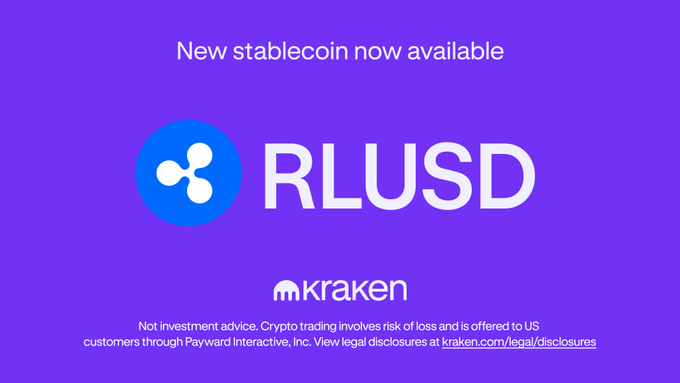On April 2, 2025, Ripple’s USD-pegged stablecoin RLUSD was officially listed on Kraken, one of the world’s leading exchanges, and simultaneously integrated into its payment platform. This event marks a critical step in Ripple’s strategic positioning within the stablecoin sector. Since receiving approval from the New York Department of Financial Services (NYDFS) in December 2024, RLUSD’s market capitalization has grown from an initial US$240 million to US$280 million. Its primary goal is to address the high costs and inefficiencies associated with cross-border payments.

Competitive Advantages of RLUSD: Compliance and Technological Integration
RLUSD’s core strength lies in its dual compliance architecture and multi-chain technology compatibility.
Regulatory Endorsement
As the first Ripple ecosystem stablecoin approved by the NYDFS, RLUSD’s reserve assets (comprising USD deposits and short-term U.S. Treasuries) are subject to monthly audits by an independent auditing firm, ensuring a transparency level significantly higher than that of USDT. This strong compliance framework makes RLUSD the preferred tool for institutional investors in cross-border payments.
Technological Adaptation
RLUSD is issued on both the XRP Ledger and Ethereum, supporting seamless integration with DeFi protocols and traditional financial systems. For example, Kraken users can convert crypto assets to fiat in minutes using RLUSD, with fees reduced by 70%. Moreover, Ripple’s collaboration with Chainlink leverages its oracle network to safeguard the immutability of RLUSD’s price data, further enhancing its use cases in decentralized finance.
Market Reaction and Competitive Landscape
On its first day of listing, RLUSD experienced a significant boost in liquidity on Kraken, with daily trading volumes surpassing US$600 million—outpacing PayPal’s PYUSD and Circle’s EURC. Its growth is driven by two factors:
-
Institutional Adoption: Cross-border payment providers such as BKK Forex and iSend have already incorporated RLUSD into their transaction processes, covering high-frequency remittance regions like Africa and Southeast Asia.
-
Ecosystem Synergy: RLUSD complements XRP—where XRP supplies liquidity and RLUSD serves as the fiat-pegging mechanism—together powering RippleNet’s annual US$70 billion payment network.
Currently, the stablecoin market is still dominated by USDT (with a 66% market share), but RLUSD’s compliance advantages render it particularly promising under the EU MiCA regulations. For instance, some exchanges like Coinbase have delisted USDT in favor of supporting RLUSD and USDC due to MiCA compliance requirements.
Future Challenges and Growth Potential
Despite its promising outlook, RLUSD faces two major challenges:
Liquidity Expansion
RLUSD’s current market cap is only 0.2% of that of USDT, and it needs to be listed on more exchanges (such as JuCoin) to expand its liquidity pool.
Regulatory Adaptability
Variations in stablecoin regulations across countries—for example, the absence of clear federal legislation in the United States—could impact RLUSD’s global expansion.
Analysts predict that if RLUSD manages to cover 50% of RippleNet’s payment scenarios by 2025, its market cap could exceed US$5 billion, potentially driving the price of XRP above US$3. Investors are encouraged to access compliant platforms like JuCoin to position themselves in this sector.




